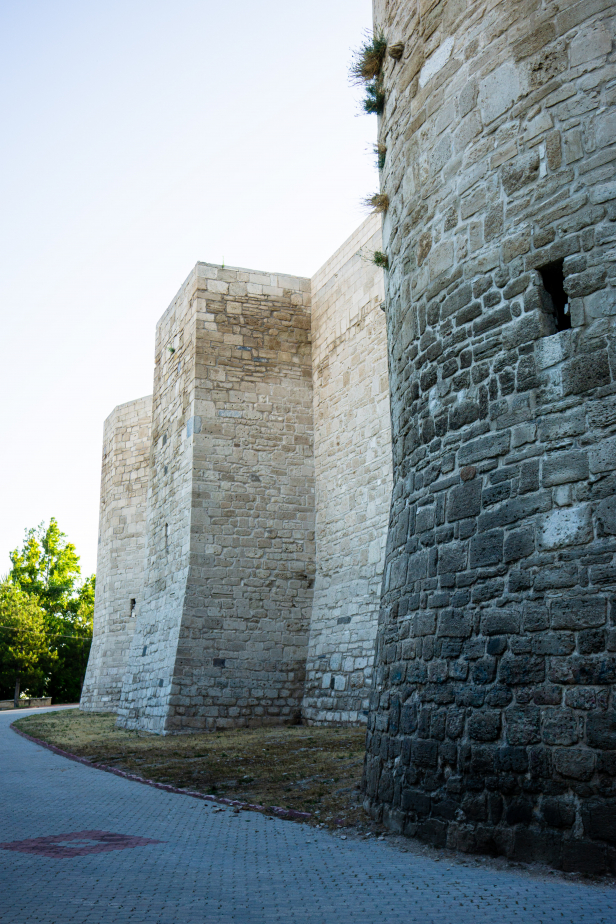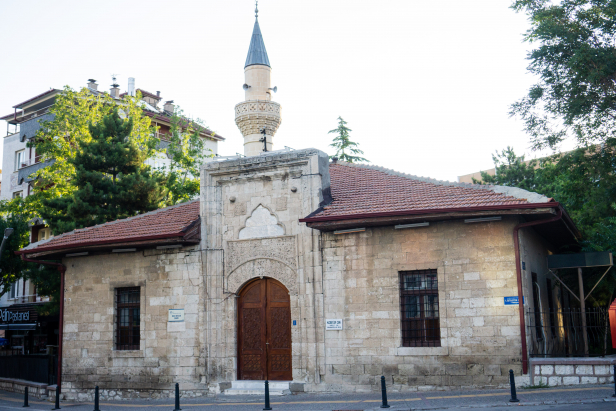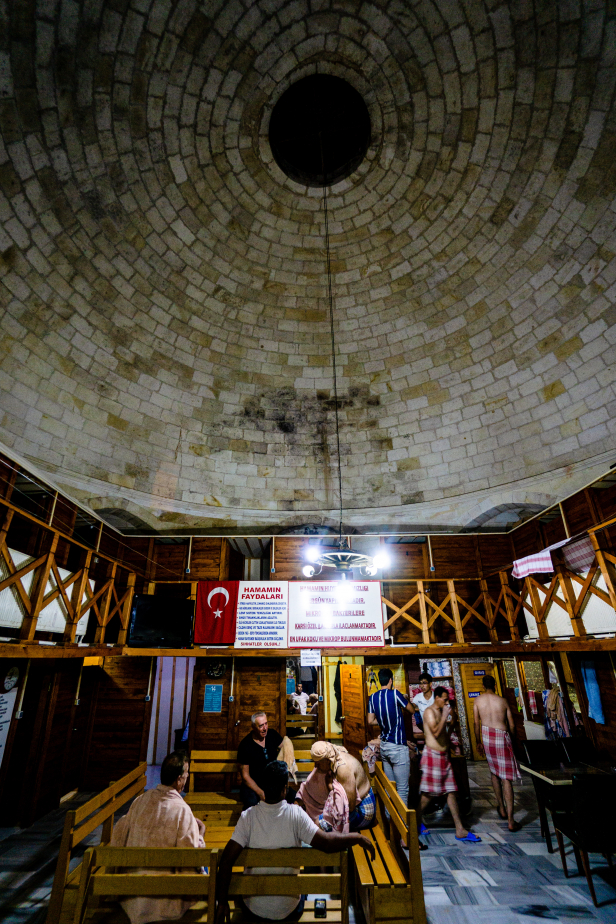The City of Karaman
/ By Josh
The city of Karaman is a typical central Turkish city blending new residential areas with cafes and shopping surrounding a historic core of old wooden buildings left over from the Ottoman period, historic mosques, high-peaked tombs, and the occasional Turkish Bath. At its heart you can find the remains of a medieval castle complex built upon a mound formed by millennia of human settlement, dating back to the prehistoric.
Most importantly, you can find hotels here. While there are some attractions to the city of Karaman, many of the best sights are actually in the countryside where there is no accommodation. As such Karaman makes a great place to be based out of when exploring the sights of Taşkale, the 1001 Church of Karadağ, or the Manazan Caves. While you may find yourself here for the hotels, there are a number of sights here that are well worth a visit.
Subscribe to The Art of Wayfaring
History of Karaman
Historic Karaman is centered on the mound under Karaman Castle. There are traces of human settlement dating back to the Neolithic, on through the Bronze and on into the Hellenistic and Roman periods. During the Bronze age the city was known as Larawanda, which became Laranda (Larande, Larenda) in the later ages.
The city was ruled by the Persians from the 6th century BC until the arrival of Alexander the Great in the 4th century BC. In the wars following the death of Alexander, Laranda was destroyed by Perdiccas, one of Alexander’s generals.
During the following Hellenistic and Roman Periods Laranda is mentioned by Strabo, father of Geography, and again as the home of a pair of epic poets of the late Roman Period. Through these eras and into the Middle Ages the city remained relatively insignificant.
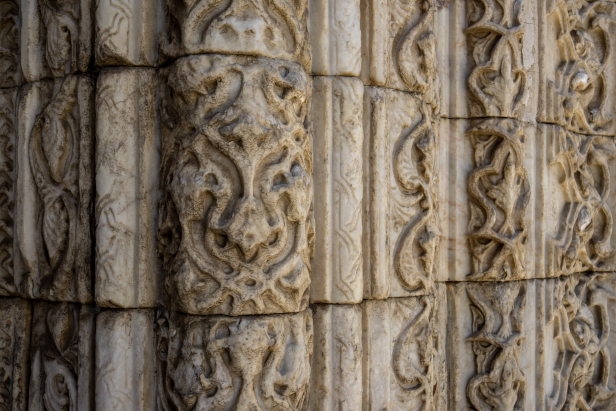
In the Middle Ages the Byzantine heirs to the Roman Empire ruled the city until the mid 12th when the Seljuks, spreading westward across Anatolia took the city. Seljuk rule was briefly interrupted by the arrival of the Crusaders who, under Frederic Barbarossa took the city. Crusader rule (and their Armenian allies) was short, with the Seljuks regaining the city after only 25 years.
By the middle of the 13th century the Seljuk empire that ruled much of modern Turkey and vast swathes of central Asia began to lose its grip and collapse in the face of the advancing Mongols and the weakened Turkic states of Anatolia splintered into a number of autonomous principalities (beylik).
In the midst of this instability Karamanoglu Mehmet Bey, a minor ruler of Ermenek (now in Southern Karaman Province), successfully led a rebellion against the Seljuks and Mongols, and in 1256 captured Laranda and made it his capital. The city, whose name had gone relatively unchanged for at least three millennia, was then changed to Karaman, in honour of the new ruler.
The principality, centered on the city of Karaman, became known as the Karamanids and rose to become one of the major forces of Anatolia until they were finally defeated by their chief rival, the Ottomans in 1468.
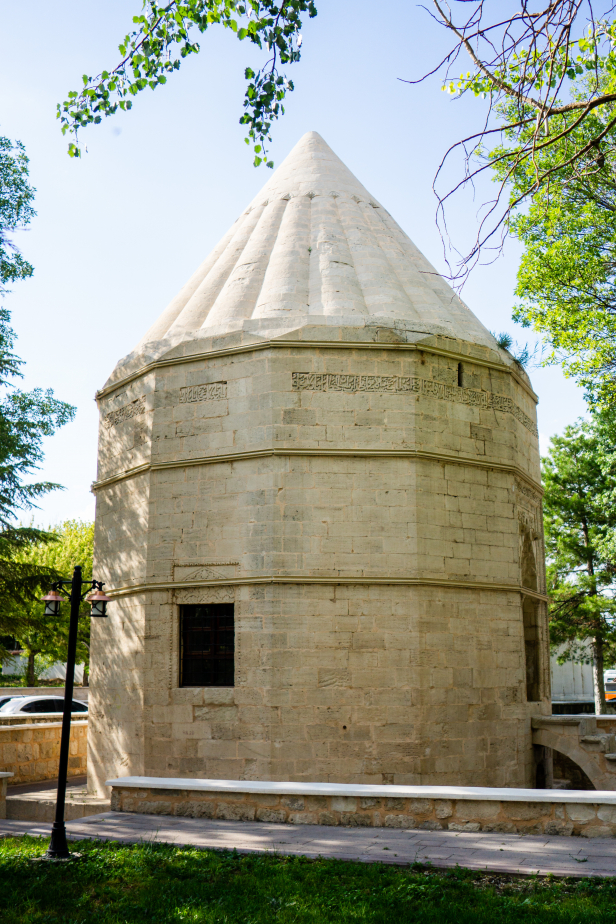
Karaman makes contact with Western history in the Barbary wars when the Karamanli Sultans of Tripoli fought against the US Navy and newly formed Marine corps under the leadership of President Thomas Jefferson in the early 19th century.
Why Visit?
Karaman Castle
Karaman Kalesi
Cost: Free
Karaman Castle sits at the heart of old Karaman. While the exact date is unknown, it is believed that the castle was built sometime around the end of the 11th or the early 12th century. As it was during this time that the Byzantines lost the city to the Seljuks, it is uncertain if the Byzantines or the Seljuks were the builders of the castle.
Karaman Castle has had a number of iterations over the centuries, being restored by the Seljuks, Karamanids, and finally the Ottomans in 1465. Today you can still see numerous architectural elements from the Seljuk and Karamanid periods used in the walls of the Ottoman restored Keep.

The final form of the castle was made up of three nested walls: an outer wall that has not survived beyond a few small sections, a middle wall, low but still very much visible on the slope of the hill, and the tall, well-preserved inner keep.
The Castle was built to take advantage of the low hill that rises above the surrounding plain. Only this hill is not natural, but rather the remains of the ancient, pre-Seljuk city of Laranda. Currently there are archaeological excavations underway inside the inner keep. These excavations are going down into the mound, shedding light on the mound’s Roman, Hellenistic, and Hittite history.
Historical Mansions of Karaman
Tarihi Konaklar
Cost: Free
While most old cities in Central Turkey have a historic neighbourhood with old stone, wood, and mud-brick houses, Karaman’s historic neighbourhood has a few beautifully preserved old mansions that are worth exploring.
The grandest of these is the Tartan Mansion (Tartan Konak), built by Hacı Ahmet Efendi of the Tartanzade family in 1810. Master builders and architects were brought from Istanbul to the small provincial city of Karaman to complete the project. What they built was a fine example of Ottoman home design both in its layout and beautiful artistry. Fine woodwork and a ceiling ornately painted with the sights of Istanbul, make the Tartan Mansion well worth a visit.

Another of Karaman’s historic mansions is the Hürrem Dayı House (Hürrem Dayı Evi), a nearly three hundred year old example of more traditional housing for Anatolia’s wealthy. Geometric patterns of painted wood adorn the ceilings and walls, while low couches and Turkish rugs adorn the floor.
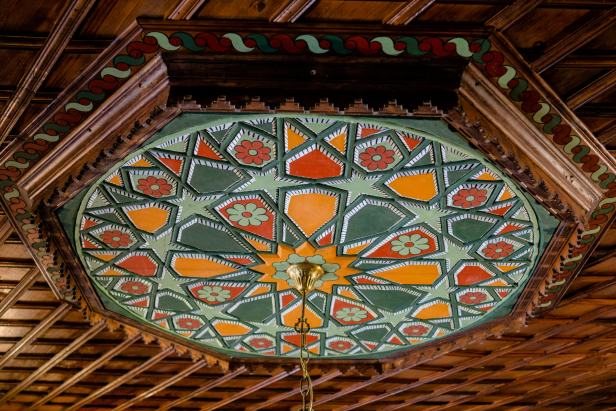
A third historic mansion is the Yusuf Emre House (Yusuf Emre Evi), a restored historic home filled with books and placards of verse from the poet-mystic Yusuf Emre who lived in Karaman. Yunus Emre composed his poetry in the mid 13th century, writing in the spoken Turkish of the common people of the region. This was an exceptional thing at the time when the other accomplished poets of his era wrote in Persian and Arabic. As such Yunus Emre has gone on to become a national hero in Turkey, a forebearer of the Turkish identity.
While his legacy is large, the Yunus Emre house in Karaman has little to offer the average visitor. In fact, if you don’t speak Turkish (and a bit of old Turkish at that), then there is actually very little for you to see here.
All three of these houses can be found in the historic neighbourhood east of the castle, south of Ataturk boulevard, near Çeşmeli Church and the Karamanoğlu Turkish Bath.
Hatuniye Madrasah
Hatuniye Medresesi
Cost: Free
Possibly the grandest building in the city of Karaman, the Hatuniye Madrasa (also referred to as Nefesi Sultan) was commissioned in 1382 by the wife of Karamanoğlu Alaattin Bey (she was also the daughter of Ottoman Sultan Murad I). The madrasah, or school, was designed in a style typical of its era with a central courtyard, flanked on the right and left by sets of cells, terminating in a grand iwan (a large vaulted space closed in on three sides and open on its fourth). While no more than traces have survived today, the iwan was once tiled, possibly similar to the iwan of Sırçalı Madrasa in Konya.
Like many of the great works of the Karamanid and Seljuk period, the most striking element of Hanuniye Madrasah is its Crown Portal door with its incredibly intricate stonework, plant and geometric motifs, and muqarnas.
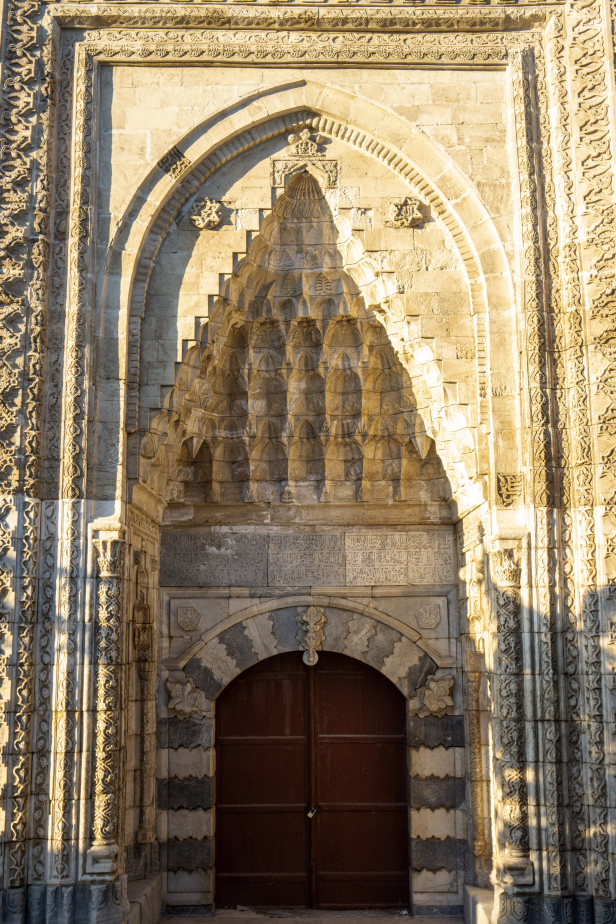
As of visiting in 2021, the madrasah was closed for restorations, though its beautiful crown portal can be seen from the street, right next to the Karaman Museum.
Historic Mosques
Tarihi Camiler
Cost: Free
While the Karamanid principality was significantly less powerful and influential than the Seljuks who they splintered off from, the Karamanids still carried on the traditions of the Seljuk art, best seen in the stone and tile work of their historic mosques.
Imaret Mosque
One of the finest historic mosques of the Karamanids, Karaman’s Imaret Mosque was built by Karamanoğlu Ibrahim Bey II in 1433. Traces of the old complex are still immediately noticeable with sections of wall still jutting out from the sides of the mosque, and an ornate gate, freestanding in front of the mosque. Next to the mosque is the tomb of Karamanoğlu Ibrahim Bey II and his family, built in Seljuk style, and topped with a large stork’s nest.

The mihrab (niche denoting direction of prayers, also used to amplify the voice of the leader of the prayers) at Imaret Mosque is a recent replacement of the beautiful original which is on display in Istanbul in Topkapı Palace, in the Tiled Pavilion Museum.
Yunus Emre Mosque
The Yunus Emre Mosque in Karaman is not particularly spectacular. The date of its construction is unknown, the only clue being a repurposed gravestone with the date 1382 on it. While some take this to mean that the mosque was built then the grave, its also possible that the grave was already old by the time it was used in the mosque.
The Yunus Emre Mosque is believed to have originally been built as part of a Tekke, or a sufi lodge, consisting of a tomb, mosque, cells for the mystics, and other buildings.
Haci Beyler Mosque
Directly across the street from Aktekki Mosque, this relatively simple mosque was built in 1356 by the representative of the Egyptian Sultan al Nusr. The Haci Beyler Mosque was rebuilt in 1496 and has remained relatively unchanged since then. The Crown Portal, though small, displays fine floral patterns as well as two squares of Kufic calligraphy.
Aktekke Camii
Built as a part of a larger social complex, the Aktekke Mosque was built in 1370 by Karamanoğlu Alaadin Bey. The complex consists of a dervish lodge, graveyard, Turkish Bath, and its central mosque. With the symbolic memorial tombs of Mümine Hatun, mother of Sufi mystic Jalal ad-Din (see his tomb in Konya), the mosque has been closely tied to mystic Islam and Sufism. The fine decorations on the dome and mihrab were added later during the classical Ottoman period.
Karaman Museum
Karaman Müzesi
Cost: Free
The Karaman Museum is the perfect companion to the out-of-city sights of Karaman province, conveying a general context for the moments in history preserved by places such as the Hartapu Monument or the 1001 Churches of Mount Karadağ.
While the museum is quite small it covers the history of the region from the prehistoric down to the recent past with finds from the Hittite, Hellenistic, Roman, Byzantine, and Seljuk periods. Most interesting, if somewhat unpleasant, is the mummified remains of a Byzantine woman, discovered in the nearby Manazan Cave City.
Surp Asvadzadzin/Çeşmeli Church
Çeşmeli Kilise
Cost: Free
Built as an Armenain Orthodox church in 1727, the church was later abandoned and used as a prison until the 1980’s. Despite second life as a prison, the church managed to survive relatively unharmed. Frescoes are still immediately obvious in the triple vault of the church interior, and crosses still adorn the exterior. The name Asvadzadzin (more commonly written Asdvadzadzin) is Armenian, referring to Mary, Mother of God, though the Turkish name, Çeşmeli, meaning “with a fountain” comes from the fountain that was once built into the church wall. The fountain that the church gets its Turkish name from however has been moved into the Karaman Museum grounds, making the name Çeşmeli somewhat less appropriate.
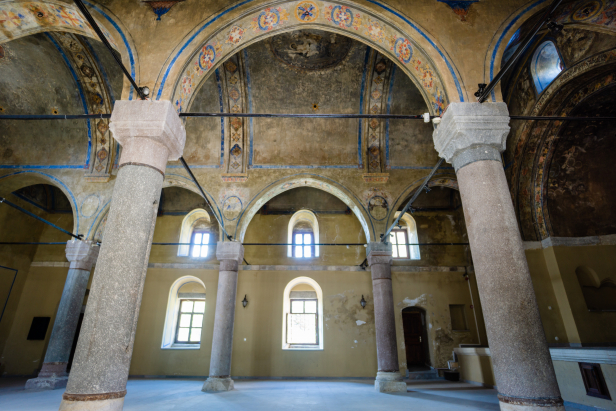
Demir Gömlek Tomb
Demir Gömlek Türbesi
Cost: Free
One of Karaman’s historic tombs dating back to 1431, during the Karamanid period, the Tomb of Demir Gömlek (meaning Iron Shirt) is a relatively simple example of a cupola-style tomb of Seljuks and Karamanids. What makes this particular tomb somewhat more interesting is the folk tale that accompanies it.
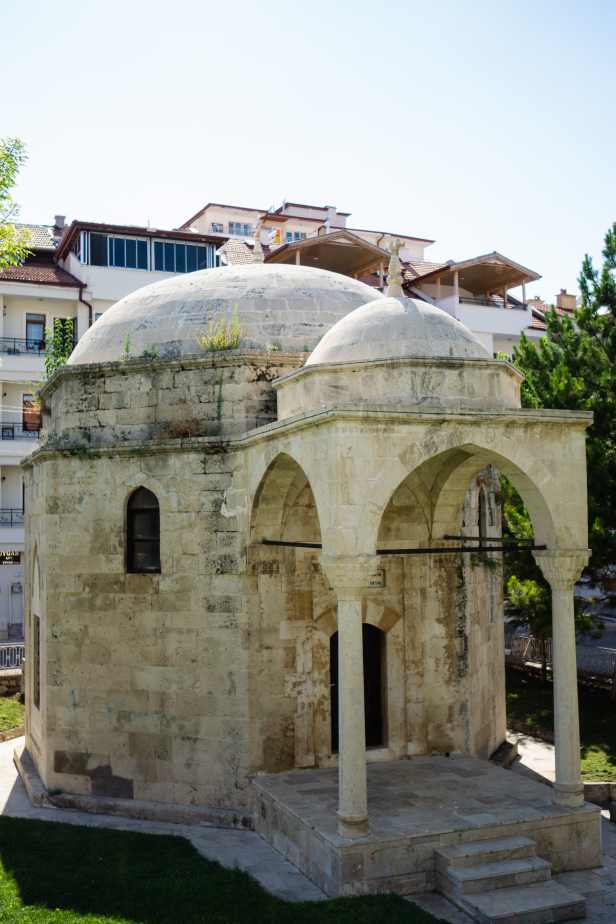
According to the story, there was a pilot who, during a war, was dropping bombs. This was before radar and navigation and so he had to choose where to drop them manually. While he was flying he heard a voice telling him where to and where not to drop the bombs, except, he was alone in the plane. When he heard the voice again he asked “who are you?” and the voice replied “I am Demir Gömlek.”
After the war the pilot went out in search of this mysterious figure and came to Karaman. Asking where he could find Demir Gömlek, the locals were shocked saying he’s been dead for centuries and buried in the 15th century tomb.
Historic Turkish Baths
Tarihi Hamamları
Cost: Varies
All good historic Turkish cities will have a Turkish Bath or two. Karaman has a few though some of them are currently under restoration. We visited the Karamanoğlu Hamamı, check out our full review.
How To Get There
General
As a provincial capital, Karaman is well connected by bus routes with a decent bus station in the city. Service runs regularly to other major cities such as Konya, Ankara, Antalya, Adana, and onwards to Istanbul.
The nearest airport is in the City of Konya which is 110 Kms away.
Where To Stay
As one of the few places in the area with any hotels, you’ll likely be staying right in Karaman itself. Like many smaller and non-touristic cities, the city center is where you’ll find the cheaper 3-star hotels while the newer 4 or 5-star hotels are out on the city limits.
Other Tips
If you’re planning on visiting Karaman, then you’re likely planning to see some of Karaman Province’s other sights as well. Make sure to check out our other Karaman guides!
Subscribe to The Art of Wayfaring
Have any tips or info to add? Spot any mistakes? We’d love to hear about it.
